Mary Wollstonecraft Worksheets
Do you want to save dozens of hours in time? Get your evenings and weekends back? Be able to teach about Mary Wollstonecraft to your students?
Our worksheet bundle includes a fact file and printable worksheets and student activities. Perfect for both the classroom and homeschooling!
Resource Examples
Click any of the example images below to view a larger version.
Fact File
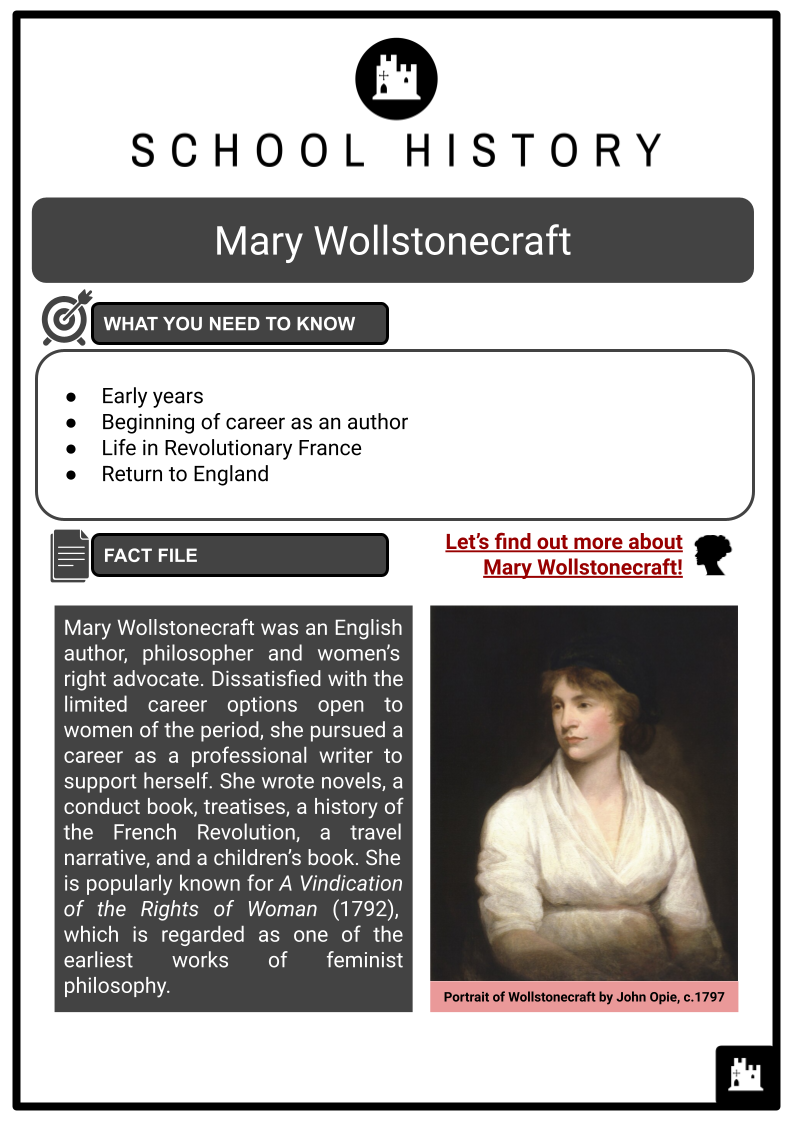
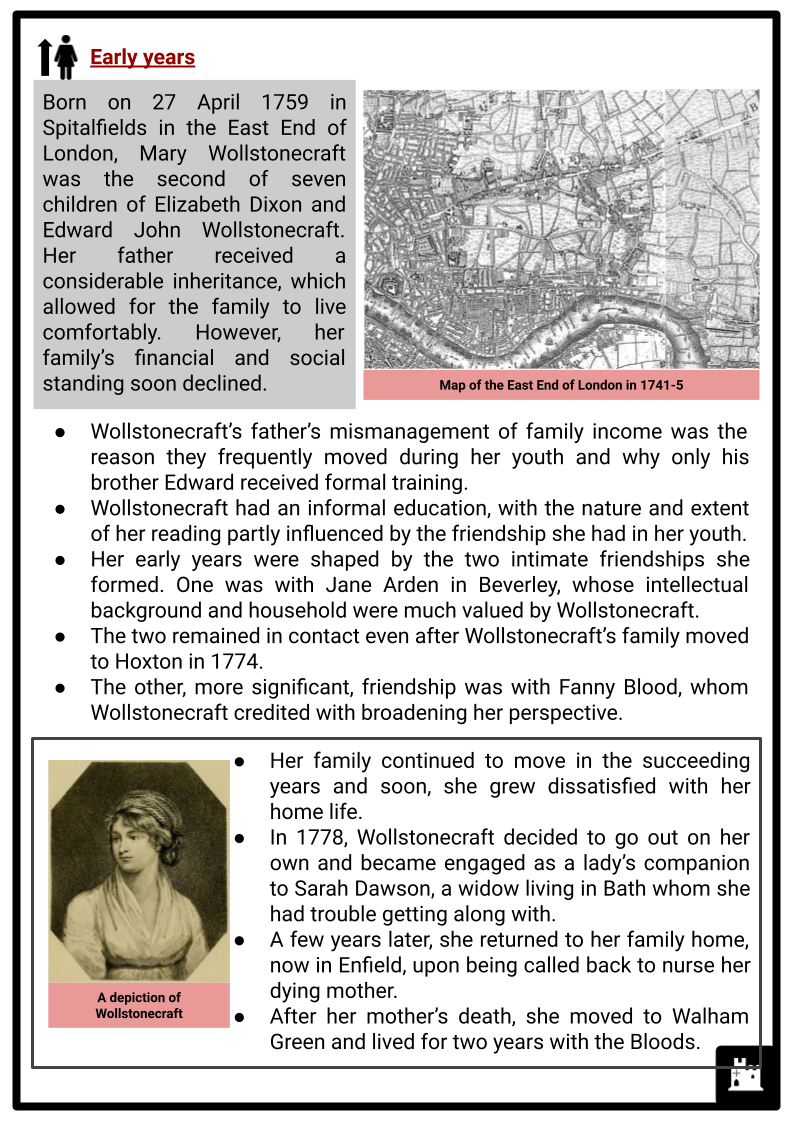
Student Activities
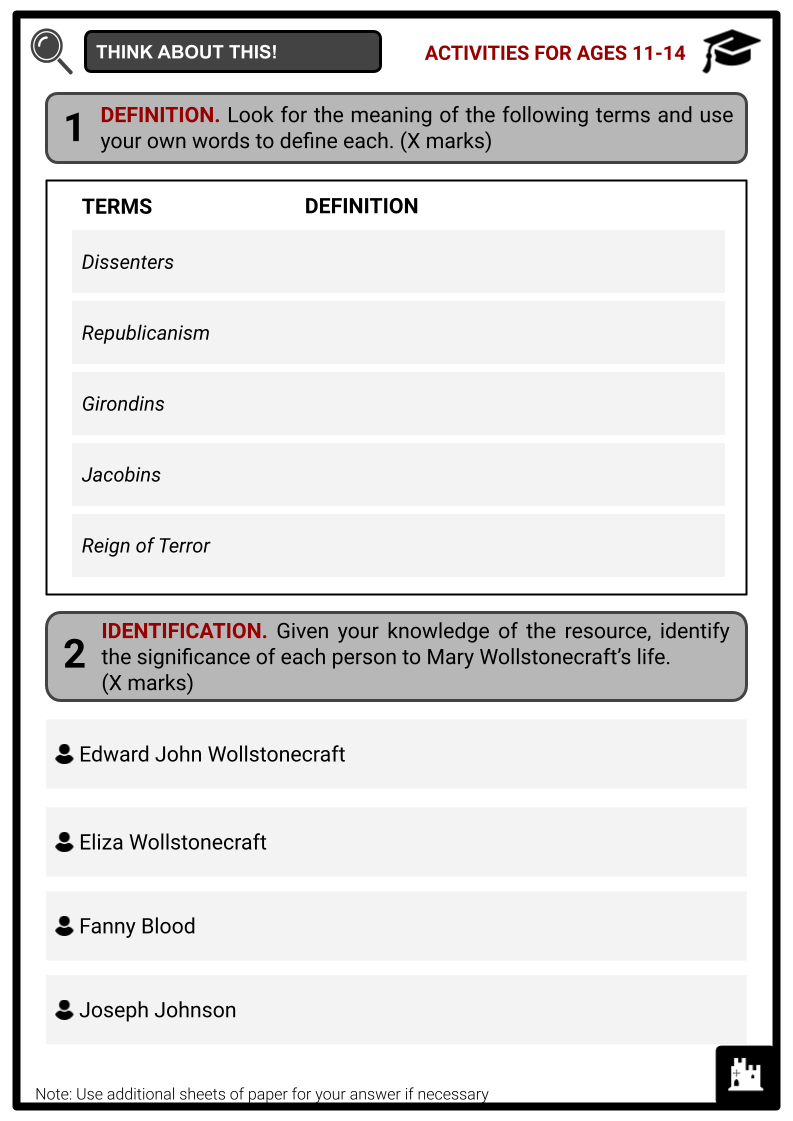
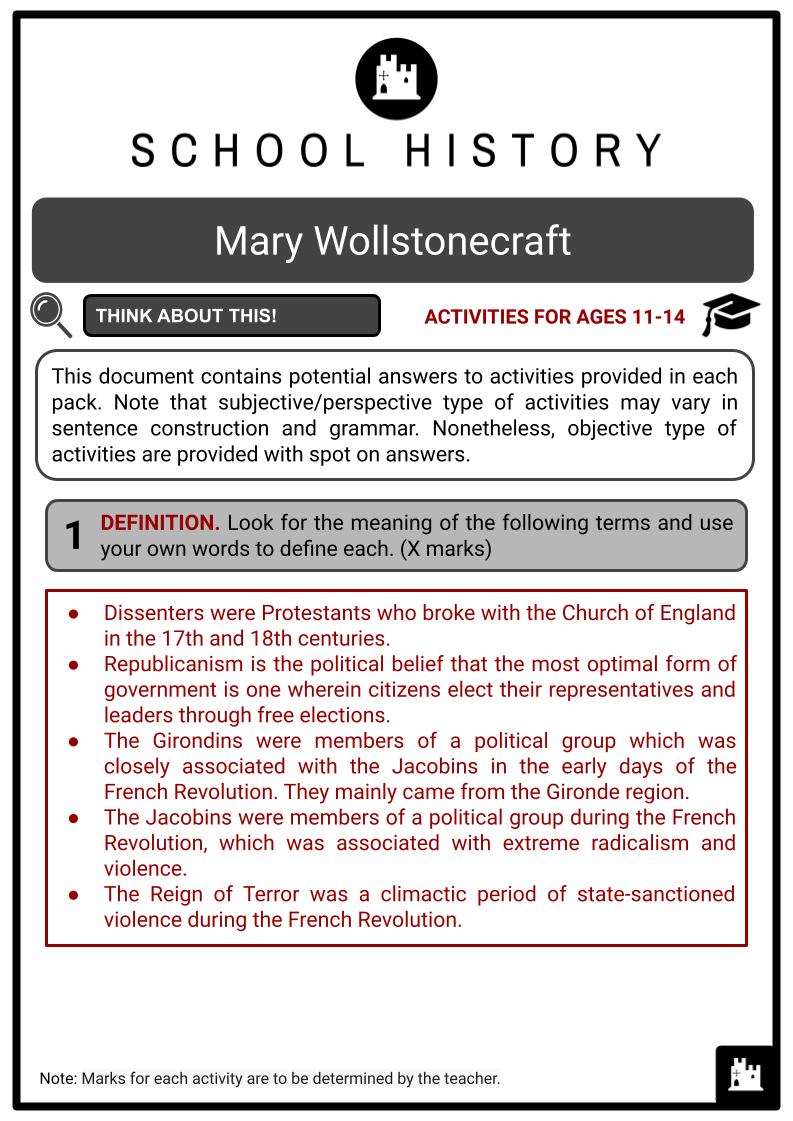
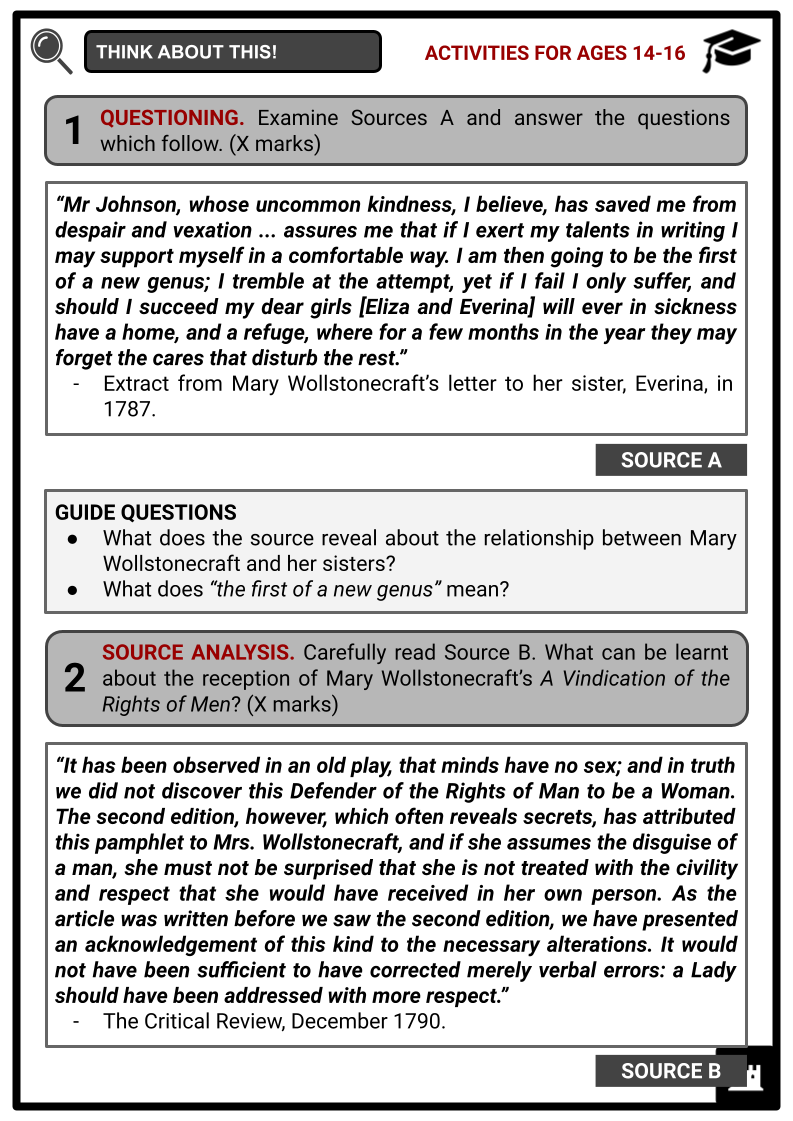
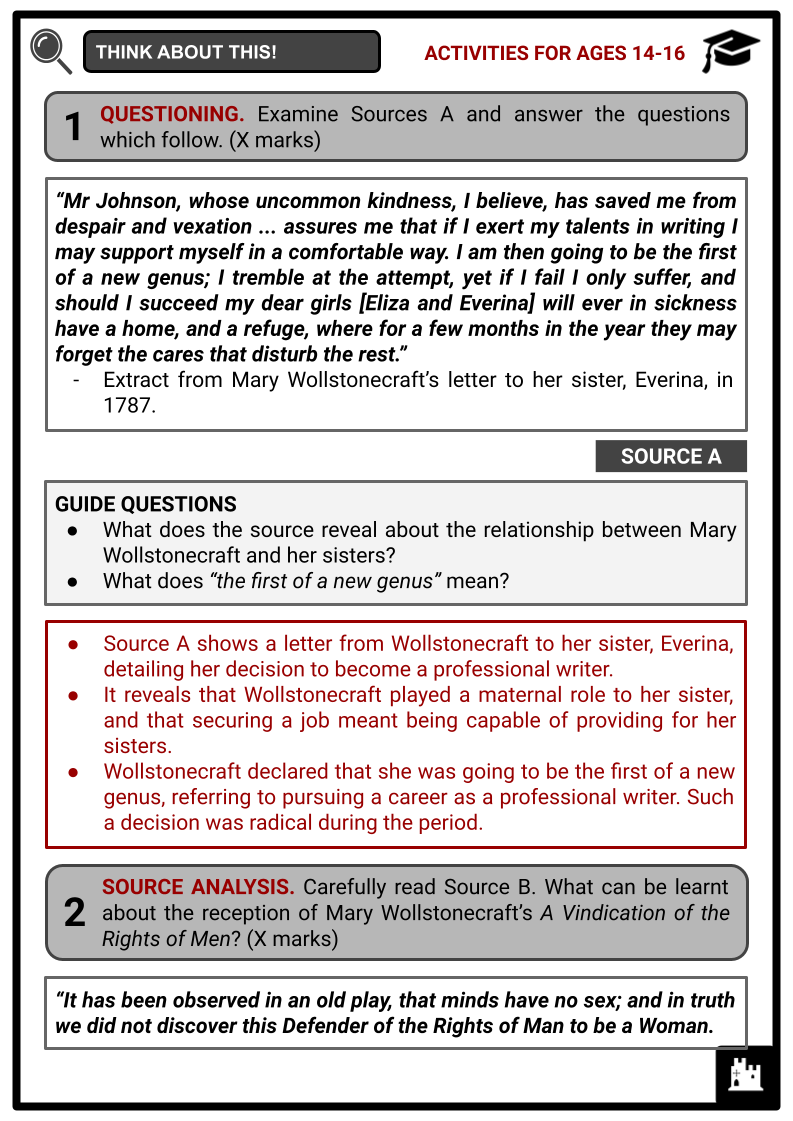
Summary
- Early years
- Beginning of career as an author
- Life in Revolutionary France
- Return to England
Key Facts And Information
Let’s find out more about Mary Wollstonecraft!
Mary Wollstonecraft was an English author, philosopher and women’s rights advocate. Dissatisfied with the limited career options open to women of the period, she pursued a career as a professional writer to support herself. She wrote novels, a conduct book, treatises, a history of the French Revolution, a travel narrative, and a children’s book. She is popularly known for A Vindication of the Rights of Woman (1792), which is regarded as one of the earliest works of feminist philosophy.
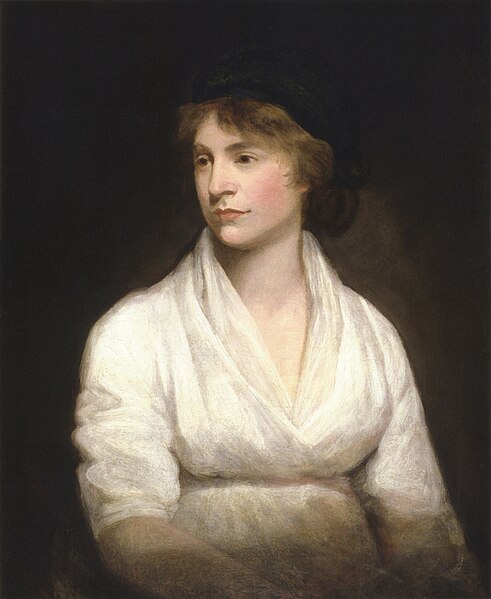
Early Years
- Born on 27 April 1759 in Spitalfields in the East End of London, Mary Wollstonecraft was the second of seven children of Elizabeth Dixon and Edward John Wollstonecraft. Her father received a considerable inheritance, which allowed for the family to live comfortably. However, her family’s financial and social standing soon declined.
- Wollstonecraft’s father’s mismanagement of family income was the reason they frequently moved during her youth and why only his brother Edward received formal training.
- Wollstonecraft had an informal education, with the nature and extent of her reading partly influenced by the friendship she had in her youth.
- Her early years were shaped by the two intimate friendships she formed. One was with Jane Arden in Beverley, whose intellectual background and household were much valued by Wollstonecraft.
- The two remained in contact even after Wollstonecraft’s family moved to Hoxton in 1774.
- The other, more significant, friendship was with Fanny Blood, whom Wollstonecraft credited with broadening her perspective.
- Her family continued to move in the succeeding years and soon, she grew dissatisfied with her home life.
- In 1778, Wollstonecraft decided to go out on her own and became engaged as a lady’s companion to Sarah Dawson, a widow living in Bath whom she had trouble getting along with.
- A few years later, she returned to her family home, now in Enfield, upon being called back to nurse her dying mother.
- After her mother’s death, she moved to Walham Green and lived for two years with the Bloods.
- In 1783, Wollstonecraft went to his sister, Eliza, who recently gave birth to a daughter and was suffering from postpartum depression.
- In January 1784, Eliza abandoned her husband and infant child at the urging of Wollstonecraft. The two sisters went into hiding.
- Early in that same year, Wollstonecraft had been planning to set up a school with Fanny and her sisters, Eliza and Everina.
- Their school first opened in Islington and then moved to Newington Green.
- It was in Newington Green that Wollstonecraft became friends with the minister Richard Price, head of the thriving Dissenting community.
- Her connections to members of this community later enabled her to gain an introduction to her future publisher.
- Blood soon left their school after marrying Hugh Skeys and moved to Lisbon, Portugal. She fell ill while pregnant, causing Wollstonecraft to follow her in order to care for her. Blood’s condition did not improve, and she died shortly after giving birth. This death devastated Wollstonecraft.
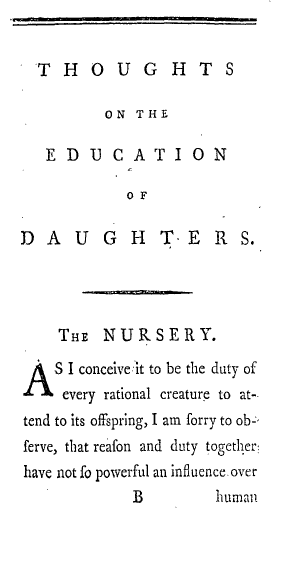
Beginning of career as an author
- Wollstonecraft returned to England, and the school was in a dire state due to financial difficulties. When the school closed in 1786, she was left without employment. With the assistance of her friends, she was able to secure a position as governess to the daughters of the Kingsborough family in Ireland. Around this time, she began to work on her first book, which was about the importance of educating girls. Thoughts on the Education of Daughters was published in 1787 by her friend, Joseph Johnson.
- Wollstonecraft travelled with the Kingsboroughs to Bristol, where she continued writing her first novel, Mary: A Fiction, which was partly influenced by Blood’s passing.
- In August 1787, she was dismissed from her governess position after only a year of working for the family.
- She returned to London and decided to pursue a career as a professional writer. This decision was influenced by the modest success of her first book and the encouragement of her publisher. It was regarded as a bold move, since only a few women of the period were able to support themselves by writing.
- Wollstonecraft found a place for herself with the help of her publisher, Johnson.
- She learned French and German, translated texts, wrote reviews and began working as an editorial assistant for Johnson and Thomas Christie’s periodical, the Analytical Review.
- In 1788-89, Johnson published Wollstonecraft’s works such as Mary: A Fiction, the children’s book Original Stories from Real Life, a translation of Jacques Necker’s Of the Importance of Religious Opinions, and an anthology The Female Reader under the pseudonym of Mr. Cresswick.
- Through her publisher, Wollstonecraft was able to meet prominent people such as pamphleteer Thomas Paine, philosopher William Godwin, political reformer Thomas Holcroft, artist and writer Henry Fuseli, radical Joel Barlow, linguist and reformer John Horne Tooke, and writer Anna Laetitia Barbauld.
- These interactions considerably broadened Wollstonecraft’s intellectual universe.
- Wollstonecraft began an intimate friendship with Fuseli, who was already married.
- While working for the periodical, she reviewed novels, poetry, travel accounts, educational works, collected sermons, biographies, natural histories, and essays and treatises on a wide range of subjects. Her reviews were generally of a moral nature.
- In late 1789, she reviewed a speech by Price entitled A Discourse on the Love of our Country, which partly prompted the Whig MP Edmund Burke to write the Reflections on the Revolution in France (1790).
- In defence of her old friend Price and in response to Burke’s political pamphlet, Wollstonecraft penned the A Vindication of the Rights of Men, which attacked aristocracy and advocated republicanism.
- This was initially published anonymously in November 1790, and she was only revealed as the author in the second edition in December.
- This brought her fame, which extended across the English Channel. In fact, she was later visited by a French statesman who travelled to London.
- In late 1791, she began working on the treatise A Vindication of the Rights of Woman, which saw publication in January 1792. This is regarded as one of the earliest works of feminist philosophy.
- In the same year, Wollstonecraft sought to keep a romantic relationship with Fuseli and even proposed a platonic living arrangement with him and his wife, believing that she could not “live without the satisfaction of seeing and conversing with Fuseli daily”. Fuseli rejected her. Wollstonecraft’s unreciprocated feelings for Fuseli and the humiliation of the incident led her to move to Paris.
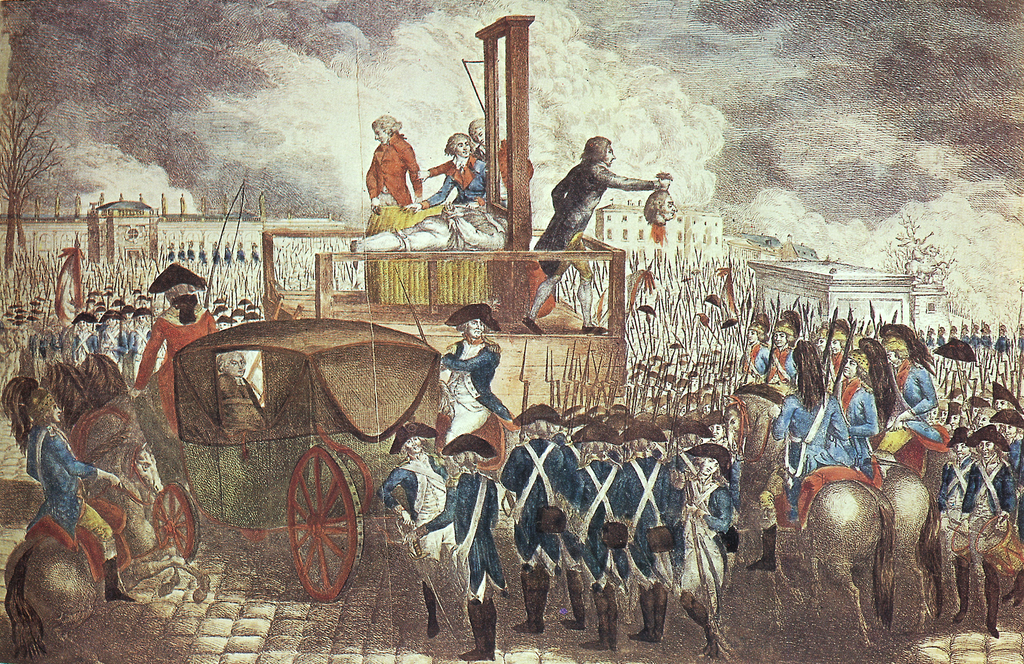
Life in Revolutionary France
- Despite many warnings owing to the volatile relations between Britain and France, Wollstonecraft left for Paris and arrived a month before Louis XVI was guillotined. She joined the circle of expatriates then in the city and primarily allied herself with the moderate Girondins, as opposed to the more radical Jacobins.
- When France declared war on Britain in February 1793, she attempted to leave for Switzerland but was unsuccessful.
- Living in France became uncomfortable for foreigners, as they were initially placed under police surveillance, were required to obtain a residency permit, and had to prove their loyalty to the republic. They were then prevented to leave the country in April.
- Wollstonecraft found it hard staying in France, especially when the Girondins had lost out to the Jacobins. In fact, some of her French friends were executed.
- Still in France, Wollstonecraft met the American writer and entrepreneur Gilbert Imlay and began a sexual relationship with him outside of marriage, which was unacceptable during the period. It appeared that Imlay was not interested in marriage.
- She soon found herself under suspicion and was shocked when most of the Girondin leaders were guillotined during the Reign of Terror. Arrests also continued.
- Imlay, who was in amicable relations with some Jacobins, saved Wollstonecraft from being arrested by registering her as his wife at the United States embassy in Paris, automatically making her an American citizen.
- Life under the Jacobins remained to be difficult, with daytime parades that required people to express their loyalty to the republic and police raids in which those who were suspected as enemies were arrested.
- Wollstonecraft was soon pregnant by Imlay. She moved to Le Havre in northern France in January 1794. On 14 May, she gave birth to her first child, Fanny, named after her dearest friend.
- Following the fall of the Jacobins, she moved to Paris, hoping that freedom of the press in France would be restored.
- In August, Imlay left Wollstonecraft and their daughter in France and travelled to London. He promised that he would return to her and Fanny soon.
- Wollstonecraft did not wish to return to England as she feared imprisonment if she returned, given her sympathy with the revolution.
- She completed a history of the early revolution titled An Historical and Moral View of the Origin and Progress of the French Revolution, which saw publication in London in December.
- Now alone in France with her infant daughter, she continued to write to Imlay, requesting him to return to them at once. However, Imlay’s delays in writing to her led Wollstonecraft to believe that he had already deserted them.
Return to England
- Seeking to reunite with Imlay, Wollstonecraft travelled to London in April 1795. However, Imlay was hesitant to live with her and maintain appearances like a conventional husband. Instead, he decided to move in with an actress. In May, Wollstonecraft attempted suicide, as she was devastated by the end of her relationship with Imlay.
- Determined to win back Imlay, she travelled to Scandinavia with her young daughter to take on business negotiations for Imlay. She stayed there for a few months.
- Back in England, she realised that her relationship with Imlay was over, and so attempted suicide for the second time by jumping off Putney Bridge into the River Thames in October.
- She eventually engaged in Johnson’s circle and started writing again.
- Early in 1796, her personal travel narrative titled Letters Written in Sweden, Norway, and Denmark was published.
- In August, her romantic relationship with William Godwin developed. When they found out that she was pregnant, the two decided to marry in March 1797, in order to ensure the legitimacy of their child in the eyes of society.
- When it was discovered that Wollstonecraft never married Imlay, the new couple lost many friends. Despite this, their marriage was happy and steady, although a brief one.
- On 30 August, Wollstonecraft gave birth to her second daughter, Mary, who would later write Frankenstein.
- Whilst the delivery appeared to have gone well, she had post-partum infection, leading to her death on 10 September. Her husband was distraught over this loss. Godwin became responsible for the care of Fanny and Mary.
- In 1798, Godwin published the first biography of Wollstonecraft, titled Memoirs of the Author of A Vindication of the Rights of Woman. This was followed by several biographies, which often highlighted the scandalous affairs that Wollstonecraft had. With the resurgence of interest in women’s rights in the latter part of the 20th century, she once again became the subject of numerous literary works.
Image Sources
- https://upload.wikimedia.org/wikipedia/commons/thumb/3/36/Mary_Wollstonecraft_by_John_Opie_%28c._1797%29.jpg/491px-Mary_Wollstonecraft_by_John_Opie_%28c._1797%29.jpg
- https://upload.wikimedia.org/wikipedia/commons/7/76/WollstonecraftEducation.png
- https://upload.wikimedia.org/wikipedia/commons/thumb/1/10/Hinrichtung_Ludwig_des_XVI.png/1024px-Hinrichtung_Ludwig_des_XVI.png
Frequently Asked Questions
- Who was Mary Wollstonecraft?
Mary Wollstonecraft was an influential British writer, philosopher, and advocate for women's rights in the 18th century. She is best known for her work "A Vindication of the Rights of Woman", published in 1792.
- What was the significance of "A Vindication of the Rights of Woman"?
"A Vindication of the Rights of Woman" was groundbreaking as one of the earliest works of feminist philosophy. It argued that women should have equal rights to men, including access to education and opportunities for self-improvement.
- What impact did Mary Wollstonecraft have on later generations?
Mary Wollstonecraft's ideas laid the groundwork for the feminist movement that followed in the 19th and 20th centuries. Her work continues to inspire discussions on gender equality and women's rights to this day.
